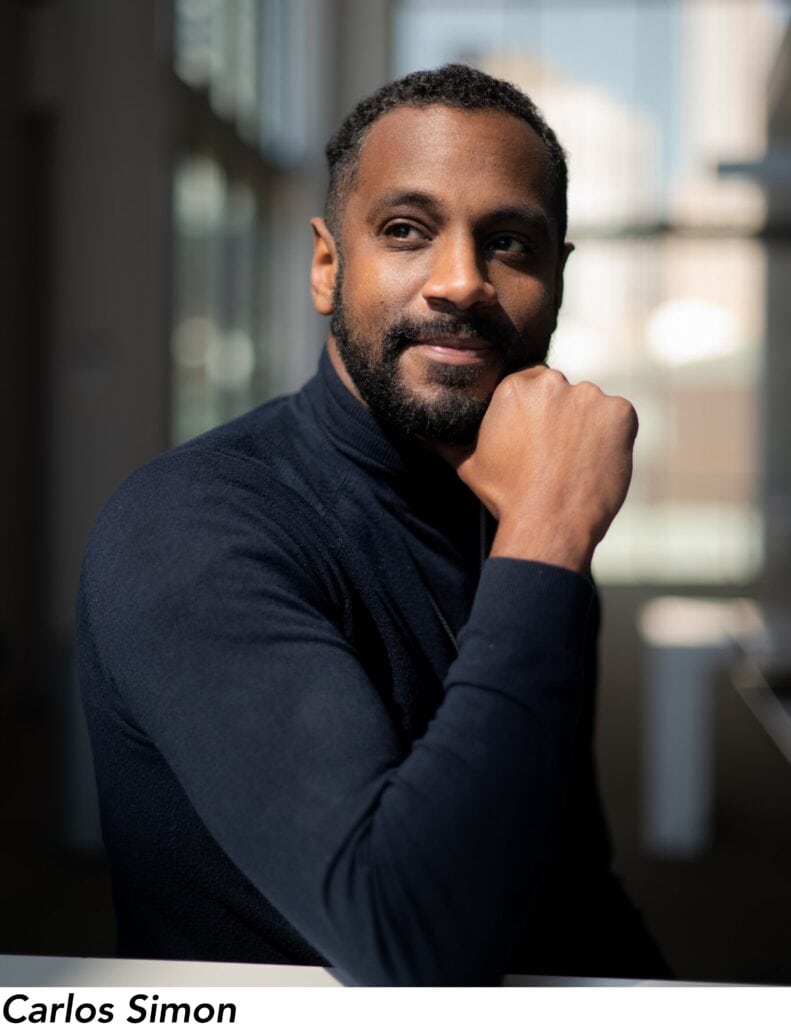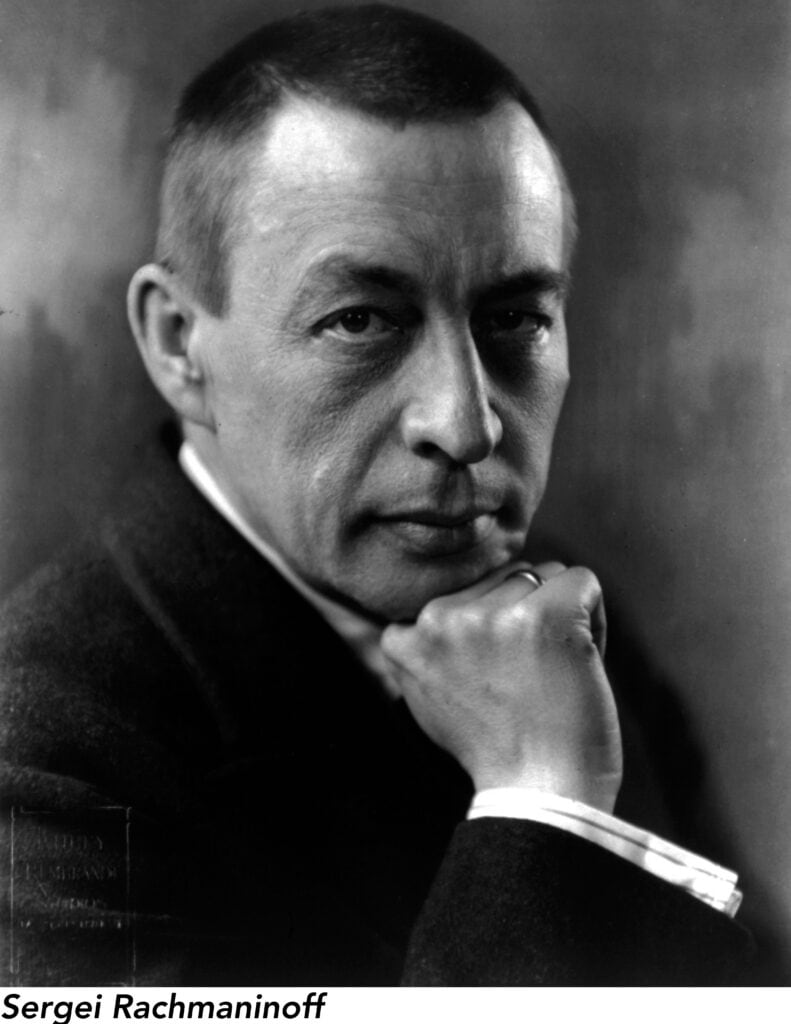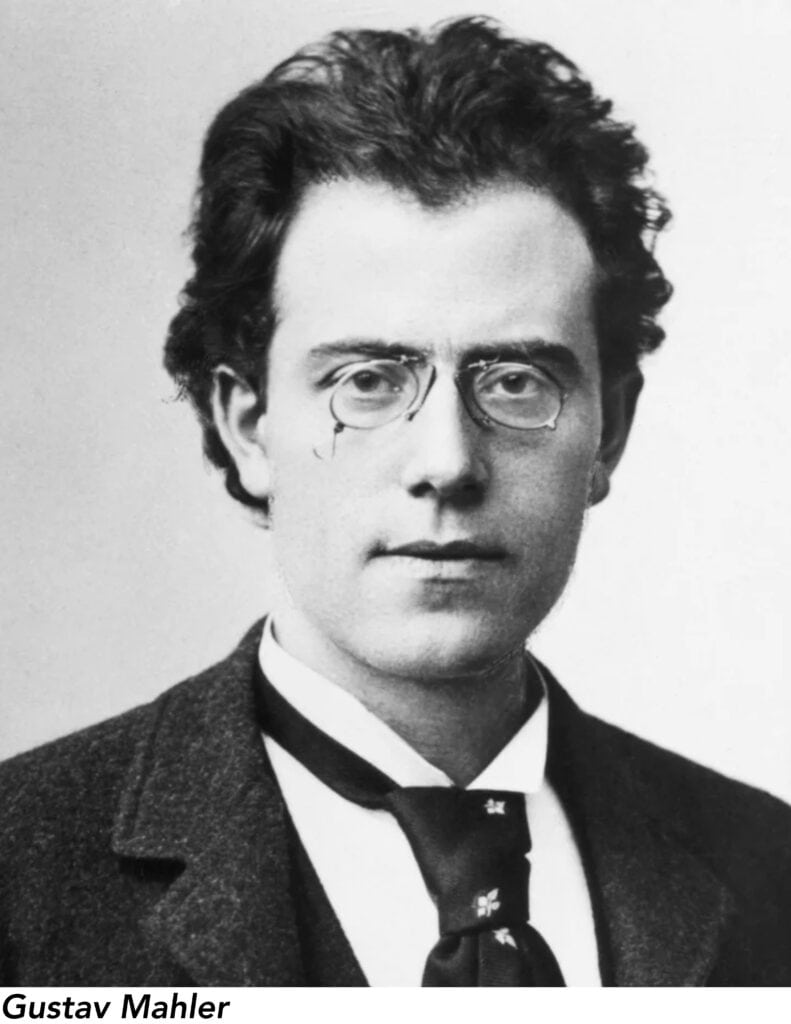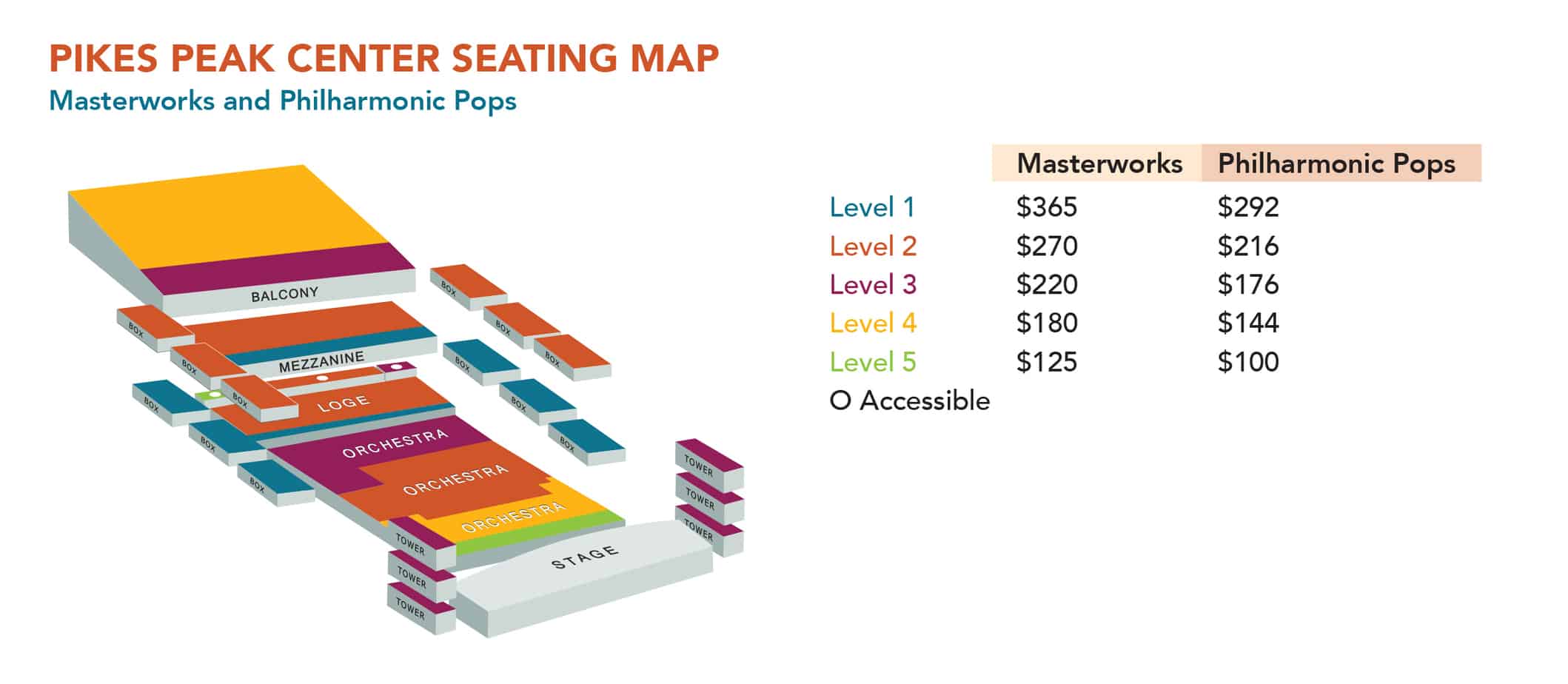Carlos Simon (b. 1986)
Carlos Simon's Fate Now Conquers
5 minutes
Composer: Carlos Simon (b. 1986)
Work composed: 2020
World premiere: The premiere occurred on March 26, 2020 at the Kimmel Center and was conducted by Yannick Nézet-Séguin
Instrumentation: 2 flutes [1 piccolo], 2 oboes, 2 clarinets, 2 bassoons, 2 horns, 2 trumpets, timpani, & strings

Simon’s Fate Now Conquers:
In just five powerful minutes, Carlos Simon’s Fate Now Conquers grips with intensity, motion, and emotional force. Inspired by a journal entry from Ludwig van Beethoven—written during one of the darkest periods of the composer’s life—the work explores fate not as a passive inevitability, but as an urgent, restless force pressing against the boundaries of choice, control, and will.
Carlos Simon, a Grammy-nominated composer and Kennedy Center Composer-in-Residence, is known for music that fuses classical tradition with vibrant elements of gospel, jazz, and contemporary Black culture. His works often engage directly with issues of history, identity, and resilience, and Fate Now Conquers is no exception. Commissioned by the Philadelphia Orchestra and premiered in the midst of a global pandemic and social upheaval, the piece feels charged with a sense of immediacy.
The title comes from a line in Beethoven’s journal, dated 1815:
‘Iliad. The Twenty-Second Book
But Fate now conquers; I am hers; and yet not she shall share In my renown; that life is left to every noble spirit
And that some great deed shall beget that all lives shall inherit.’
Simon has said that these words inspired him to capture Beethoven’s defiance—his struggle with adversity, yet determination to shape his destiny. The music doesn’t quote Beethoven directly, but Simon nods to the harmonic language of Beethoven’s Seventh Symphony, reimagined through a modern, rhythmically charged lens. The piece begins in medias res—no gentle prelude, no easing in. Strings pulse in swirling motion, winds flutter, and low brass create a sense of grounded urgency. Throughout, the music teeters between chaos and control, order and interruption.
Though brief in length, the work is symphonic in ambition. Rhythmic tension and dynamic surges keep listeners on edge, as if fate were a storm circling just out of reach. But there are also moments of clarity—flashes of light that feel like windows into hope or strength. Ultimately, the piece ends not with resolution, but with a kind of suspended motion, as though the struggle continues beyond the final chord.
For audiences, Fate Now Conquers offers a visceral, contemporary reflection on Beethoven’s timeless question: Do we control our fate—or does it control us? In a world still grappling with uncertainty, Carlos Simon’s music reminds us of the power of persistence, imagination, and the unyielding desire to create meaning—even in the midst of turmoil.
Sergei Rachmaninoff (1873–1943)
Rachmaninoff's Piano Concerto No. 2 in C Minor, Op. 18
Approximately 35 minutes
Composer: Sergei Rachmaninoff (Born in Semyonovo, Russian Empire in 1873; Died in Beverly Hills in 1943)
Work composed: 1900 – 1901
World premiere: The premiere occurred on November 9, 1901 in Moscow, with Rachmaninoff as soloist and Alexander Siloti making his conducting debut
Instrumentation: 2 flutes, 2 oboes, 2 clarinets, 2 bassoons, 4 horns, 2 trumpets, 3 trombones, tuba, timpani, percussion (bass drum and cymbals), strings, and solo piano

Rachmaninoff’s Piano Concerto No. 2
I. Moderato
II. Adagio sostenuto
III. Allegro scherzando
Some music moves us with sheer beauty. Some tells a story. And some—like Rachmaninoff’s Second Piano Concerto—do both while offering something even more powerful: a glimpse into the resilience of the human spirit.
Completed in 1901, this concerto is widely considered one of the most beloved in the entire piano repertoire. It’s grand, expressive, and filled with melodies that stay with you long after the final note. But behind the music lies a remarkable story of perseverance. Just a few years earlier, Sergei Rachmaninoff had suffered one of the most devastating artistic setbacks of his life. The premiere of his First Symphony in 1897 was a disaster—poorly performed, poorly received, and publicly ridiculed. The criticism left him shaken, and he fell into a deep depression, unable to compose for years.
What pulled him out wasn’t just time—it was help. Rachmaninoff sought treatment from Dr. Nikolai Dahl, a physician who practiced a form of early hypnotherapy and encouraged him with daily affirmations. With patience and support, Rachmaninoff slowly began to find his creative voice again. His Piano Concerto No. 2 was the first major work to emerge from this breakthrough, and he dedicated it to Dr. Dahl as a gesture of gratitude.
From its opening moments, this concerto draws listeners into a world of emotion and transformation. Rather than a grand entrance, the music begins with quiet, tolling chords from the piano—like the sound of distant bells or a heartbeat rising from stillness. Gradually, the orchestra joins in, and a sweeping melody takes shape. The first movement (Moderato) builds intensity through dialogue between piano and orchestra, blending introspective lyricism with bursts of passion and momentum. At every turn, Rachmaninoff invites us to feel deeply—not just to listen, but to connect.
The second movement (Adagio sostenuto) brings a shift in mood, unfolding like a dream. The strings open with a gentle, floating motif, and the piano answers with a melody that feels both intimate and timeless. It’s a moment of quiet reflection, where time seems to slow and the music becomes a kind of whisper between the composer and the listener. Though understated, this movement is emotionally rich—full of longing, warmth, and grace.
The finale (Allegro scherzando) returns us to vitality. It opens with a restless, driving rhythm and bursts of bright, sparkling energy from the piano. Yet, even in its boldest passages, Rachmaninoff never loses his signature lyricism. A second theme, tender and soaring, becomes one of the concerto’s most recognizable melodies—so compelling that it’s been quoted in everything from pop songs to movie scores. As the movement unfolds, the music grows more confident, more radiant, ultimately concluding in a triumphant shift to C major. It’s a transformation not just in key, but in feeling—a sense of emergence, of coming fully into the light.
For Rachmaninoff, this concerto marked a turning point, both professionally and personally. Its success restored his reputation and allowed him to return to performing and composing with renewed purpose. But more than that, it was proof—to himself and to the world—that beauty can be born from adversity.
Today, the Second Piano Concerto remains a cornerstone of the concert hall, treasured by performers and audiences alike. Its soaring themes, emotional honesty, and dazzling piano writing remind us of the universal power of music to heal, to uplift, and to connect.
Gustav Mahler (1860–1911)
Symphony No. 1 in D Major (“Titan”)
Approximately 55 minutes
Composer: Gustav Mahler (Born in Kaliště, Bohemia, Austrian Empire in 1860; Died in Vienna in 1911)
Work composed: 1884 – 1888
World premiere: The premiere took place on November 20, 1889, in Budapest, conducted by the composer
Instrumentation: 4 flutes (3 of them doubling piccolo), 4 oboes (1 doubling English horn), 4 clarinets (1 doubling bass clarinet, 2 doubling E-flat clarinet), 3 bassoons (1 doubling contrabassoon), 7 horns, 5 trumpets, 4 trombones, bass tuba, timpani (2 players), bass drum, cymbals, triangle, tam-tam, harp, and strings (violins I and II, violas, cellos, and double basses)

Mahler’s Symphony No. 1 in D Major (“Titan”)
I. Langsam, schleppend (Slowly, dragging) Immer sehr gemächlich (very restrained throughout)
II. Kräftig bewegt, doch nicht zu schnell. (Moving vigorously, but not too fast.)
III. Feierlich und gemessen, ohne zu schleppen. (Solemn and measured, without dragging.)
IV. Stürmisch bewegt – Energisch (Stormily agitated – Energetic)
Gustav Mahler once said, “A symphony must be like the world. It must contain everything.” His Symphony No. 1 is a brilliant embodiment of that idea—a work of sweeping contrasts, surprising turns, and raw emotional power. From its mysterious, slow-burning opening to its triumphant final outburst, the First Symphony feels like a journey through a landscape as vast and varied as life itself.
Mahler began work on this symphony in his twenties, while also building his career as a conductor. Like many young artists, he poured his whole self into the score—his joys, his heartbreaks, his questions about existence. At its premiere in 1889, audiences were baffled. The blend of folk tunes, funeral marches, birdcalls, and outbursts of brass fanfare didn’t fit any mold they recognized. But over time, this audacious debut has come to be seen as the first true expression of Mahler’s unique musical voice.
The symphony opens with a soft, sustained “A” in the strings—barely a whisper—over which distant birdcalls, fanfares, and fragments slowly awaken. It’s like the dawning of a world, and in a way, it is: Mahler asks us to enter a soundscape that is constantly in motion, never settling. When the main theme arrives—drawn from his earlier song Ging heut’ Morgen über’s Feld (“I Went This Morning Over the Field”)—it’s fresh, tuneful, and full of optimism. This first movement (Langsam. Schleppend – Im Anfang sehr gemächlich) feels like a walk through the countryside, filled with youthful energy and joy, but also shadowed by uncertainty.
The second movement (Kräftig bewegt, doch nicht zu schnell) is a rustic dance, based on a lively Ländler, a folk waltz. It’s earthy and vigorous, full of swagger and stomping rhythms, like a village band playing at a festival. But as always with Mahler, there’s an undercurrent—something slightly exaggerated, as if the joy is both real and a little ironic.
Then comes the third movement, and with it, a dramatic shift in tone. Mahler takes the children’s tune Frère Jacques and transforms it into a minor-key funeral march. It’s haunting and surreal—both playful and deeply unsettling. In between, he inserts klezmer-inspired music and references to earlier material, creating a collage of sound that mirrors memory, grief, and absurdity. At the time, critics were confused by this juxtaposition of humor and despair. Today, it feels strikingly modern.
Finally, the fourth movement (Stürmisch bewegt) erupts without warning. A sudden crash of cymbals and timpani launches us into a storm of emotion. The music struggles, soars, retreats, and battles its way forward. Mahler pulls us through despair, fury, hope, and finally into blazing triumph. The symphony ends with a radiant D major chorale, the horns standing and roaring out in a final blaze of victory.
More than a century later, Symphony No. 1 still feels startlingly alive. It’s not just the work of a young genius making his mark—it’s a testament to the idea that music, at its best, doesn’t resolve life’s contradictions. It holds them, honors them, and invites us to listen with open hearts.


